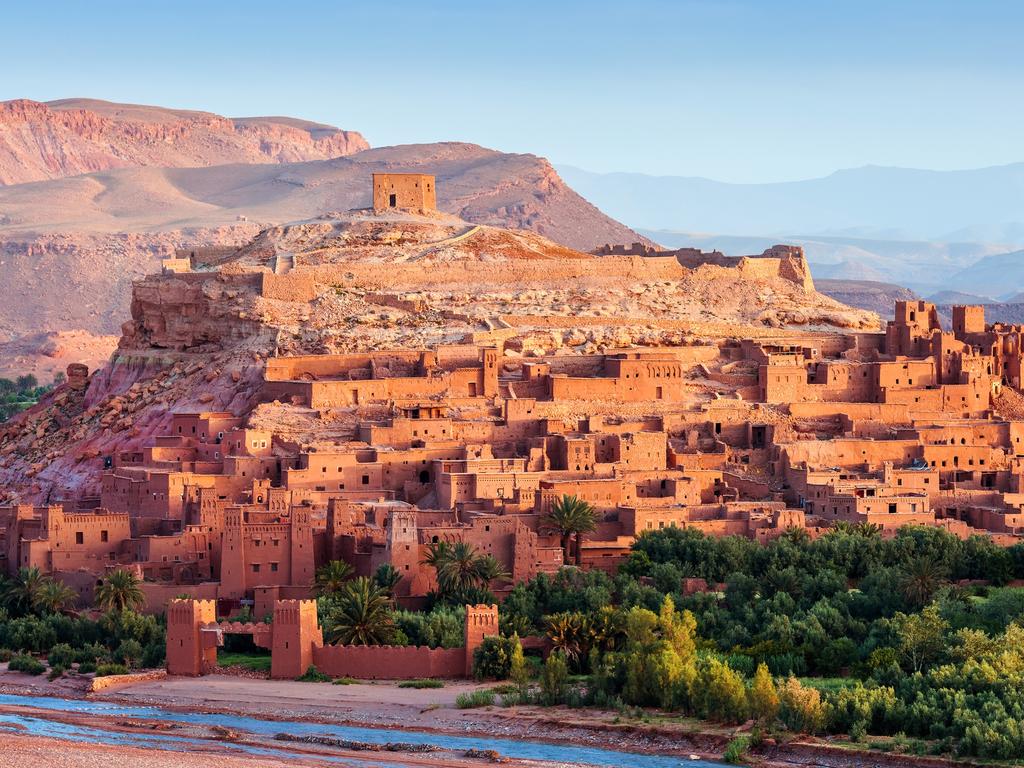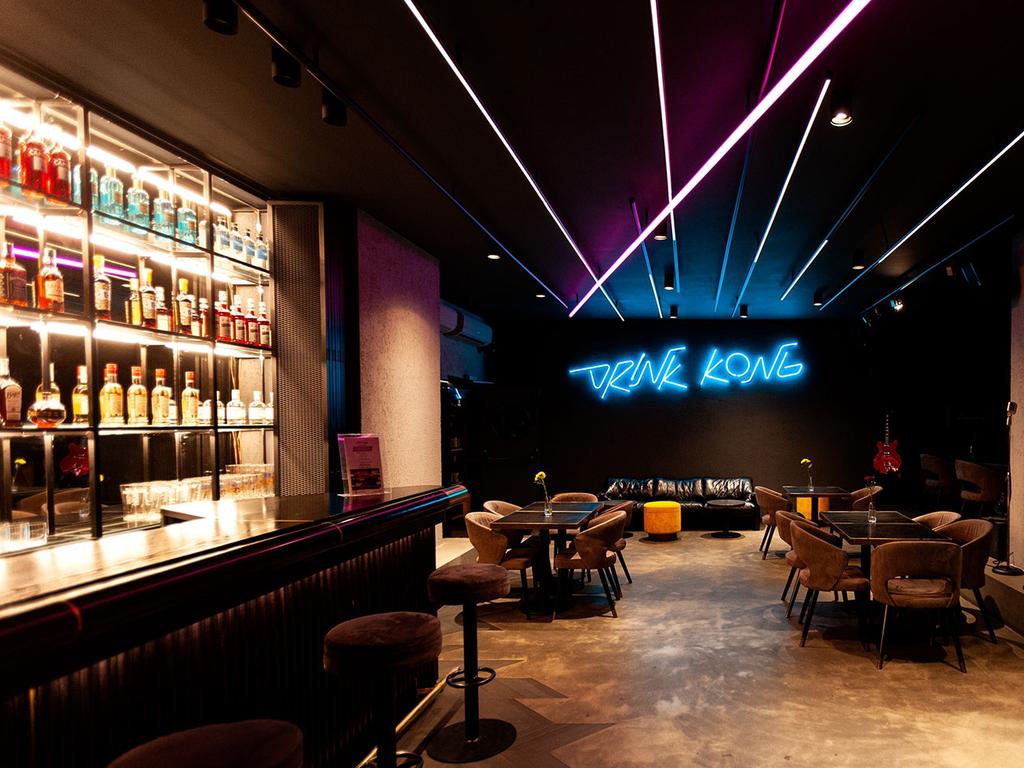Inside Morocco’s windy city: Why creatives are flocking to Essaouira
Every summer, residents of the Red City make the three-hour drive west to bathe in cool coastal breezes. Here’s why you should too.

In Essaouira, the alizee won’t be denied. The locally named northeast trade wind gusting in off the Atlantic is at once the city’s greatest asset and, at times, its greatest irritation – ruffling seagull feathers, flipping the lid off a street food vendor’s giant pan of sweet corn, blowing sand into tourists’ French fries and salty humidity into the tightly packed buildings of its World Heritage-listed medina.

Yet the alizee, or taros as it’s called in Berber, is also what makes this low-slung Moroccan port city such a draw. Blowing relentlessly from April to October, it cools the landscape and the surrounding argan and thuja forests, bloats the sails of kite-surfers scudding over the waves, and provides relief for sweltering Marrakshis, who every summer make the three-hour drive west from the Red City to bathe in its breezes.
On one cool April morning, the alizee carries the rousing aroma of coffee and freshly flipped pancakes along an alleyway of the medina – a warren of whitewashed buildings with blue-framed windows, protected from the Atlantic breakers by soaring ramparts known as the Skala de la Ville. Here, days start with life-affirming regularity: old timers in djellabas chatting on street corners; young guns with guitars slung across their backs weaving along on vintage bikes; hand carts piled high with eggs and other groceries; shop awnings being squeakily raised, ready for trade.

The medina feels like Essaouira’s timeless soul, embodying an indefinable era that could be medieval (there’s a reason the city was chosen as the setting for Astapor in Game of Thrones) or mid-1960s, thanks to its laid-back culture that fosters a creative community strong on music and art. Once a source of inspiration for Jimi Hendrix, Frank Zappa and Cat Stevens, Essaouira is finding its rhythm again, thanks largely to two major international events on its annual calendar: the Gnaoua & World Music Festival, held every June, and October’s Moga electronic dance festival. It’s also a hub of galleries and handicrafts, from thuja wood carvings to colourful raffia sandals, with newer lifestyle stores – such as Minimal, Salam and Kactus – complementing a renewed appreciation for local heritage with more modernist, Moroccan-inspired homewares.

“A lot of creative people, artists, are coming here and bringing a new life and vibe to the city,” says Mounia Ezzaher, whose Swiss-Moroccan parents, Cornelia and Abderrahim, bought Villa Maroc in the 1990s and established it as one of Morocco’s first riad hotels of note. At the edge of the medina, they transformed four graceful houses into a beautiful network of idiosyncratic rooms, suites and living spaces featuring fireplaces and original wood ceilings, and scattered with antiques, vintage textiles and Moroccan paintings by contemporary talent. Ezzaher, who now manages the hotel full-time, says the trick to achieving the property’s harmonious design has been to honour its heritage while embracing new artistic elements.
It’s an approach that seems stitched into the city’s DNA. Built relatively late, in 1765, the walled city, known then as Mogador, was designed to a European city plan that was intended by its instigator, Sultan Sidi Mohamed Ben Abdallah, to foster both commerce and multiculturalism.

From Villa Maroc’s rooftop, views sweep from the modern city, with its 2km stretch of oceanfront promenade and breezy beach bars, to the traditional port, just outside the medina, where jaunty blue fishing boats bob alongside nets piled shoulder-high on the dock.
Atop the Skala are more Atlantic panoramas along with 19 bronze cannons, pointing out to sea and to Essaouira’s history. Yet the joy of this city lies not in iconic buildings and bucket-list views, but in the simple pleasure of relaxed, unplanned days.
It can be easy to lose your bearings in the medina, which is blissfully free of cars and motorbikes, but it’s hard to go wrong if you follow your eyes and appetite. Good food is everywhere in Essaouira, a city famous for its sardines, but favourites for traditional Moroccan soups and tagines include Restaurant Adwak, and the tiny Restaurant Berbere, where you feel as if you’re dining in the family living room. For a more glamorous evening, Villa Maroc, which operates a close to zero-waste kitchen, serves a daily changing traditional dinner menu to both hotel guests and outsiders, based on whatever’s available in the market that day.

Souris are proud of their reputation for not harassing tourists to buy the embroidered baskets, leather goods, paintings, argan oil, carved wooden objects and colourful raffia sandals spilling out of the souvenir shops along Avenue Sidi Mohammed Ben Abdellah. There are plenty of bargains to be had, but for more serious shopping, Galerie Jama, run by the expert and ever helpful Mustapha El Boussaidi, is universally recommended for impeccably sourced vintage and modern rugs, plus antique doors, pottery and other artefacts, while La Fibule Berbere specialises in statement-making authentic Berber jewellery.
Beyond the medina walls, there are plenty of opportunities to get out into the elements, from surfing to horseback riding. You can take your chances with one of the lone operators leading their beautiful Berber horses along the southern end of Essouira’s main beach or head 25km down the coast to the coastal hamlet of Sidi Kaouki, where Ranch de Diabat offers riding experiences that range from one hour to a week, taking in everything from wild Atlantic beaches to the region’s argan-studded woodlands.


Sidi Kaouki is also where you’ll find one of the best reasons to get out of town: Mellow Beach House, a sustainable haven of just seven rooms set in the hills high above the main surf beach. Surrounded by tranquil thuja woodland, it’s traditionally built in stone, clay and timber, and strong on natural tones and textures, brightened by an abundance of light pouring in through the wraparound windows in its communal spaces, vibrant floor cushions and modernist Moroccan-themed paintings.
The entire property can be rented out – little wonder it’s popular for surf and yoga retreats – but even when full it’s a place of peace, where the biggest interruption is likely to be a bleating lamb, straying from its flock into the hardscrabble garden that tumbles down the hillside. As the North African sunset turns peachy, there’s no better place to kick back than on the terrace, with a glass of something cool beading in the evening air. If you squint, you might just be able to spot the surfers, carving it up on the windblown waves far below.
In the know
Villa Maroc has rooms from €180 ($308) a night.
Mellow Beach House has rooms from 760 dirhams ($130) a night.
Emma Ventura was a guest of Mellow Beach House.
If you love to travel, sign up to our free weekly Travel + Luxury newsletter here.




To join the conversation, please log in. Don't have an account? Register
Join the conversation, you are commenting as Logout